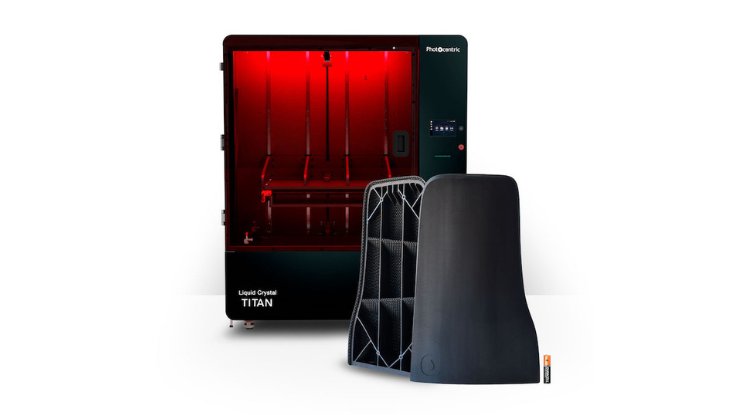Photocentric has displayed parts printed with Liquid Crystal Titan, its largest 3D printer yet, developed to combine large size, high resolution, print speed and accuracy.
Equipped with a 700 x 395 x 1200 mm build volume and a 91µm pixel pitch resolution, Titan also features an 8K 32” LCD screen.
This new machine aims to make large-scale production a reality for AM applications in automotive, transport, creative arts and merchandising.
Photocentric has also announced it will be delivering ceramic production parts in Alumina and Silica and benefiting from extensive years of experience in photopolymer and LCD-based large-scale manufacturing to mass manufacturing Alumina parts.
Photocentric has explained that Alumina is a versatile ceramic showing superior electronic, chemical and thermal properties and customers use it in advanced applications such as aerospace, medical, automotive, chemical and electronic industries.
Photocentric said it is working in partnership with the Centre of AM Excellence, AM-COE to provide mass production of Silica cores with improved performance beyond what injection moulding can offer.
Typically, customers are from high-value-manufacturing industries such as aerospace, energy, automotive and oil and gas.
Photocentric has also partnered with Loctite and BASF Forward AM, to develop and validate high-performance engineering-grade resins for industrial applications.
At the show, Photocentric has showcased parts with new properties such as high elongation, high rebound and high impact absorption.
“We are thrilled to be back at Formnext bringing our latest advancements on materials, hardware and control software to scale up additive manufacturing processes through automation and enable customers to run production parts in our 66,000 sqft digital factory,” said Photocentric founder Paul Holt.
“This year, we are co-exhibiting with software partner Core Technologie; jointly, we have developed Photocentric Additive software for our Liquid Crystal 3D printers. On display, there will be an array of parts with textures and finishes that we manufacture using the combined technologies.”






